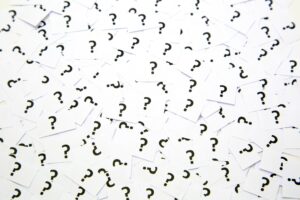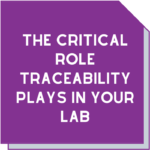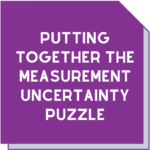Climbing your Traceability Tree

Most NATA-accredited labs will butt up against the requirements for metrological traceability. Those requirements seem to have become more difficult to meet, with even the tiniest and what would seem an insignificant piece of equipment or reference material being the subject of a condition for accreditation.
Many labs have told us of the relentless demands to spend more and more money on expensive calibrations and certified reference materials.
Where are these demands coming from and how can you meet them without breaking the bank? That’s what we’ll be exploring in this article.
The “why” of metrological traceability requirements
 Most labs will understand that there is a need to compare results over time or between different batches or laboratories. To do that, we need to all be going back to the same point to know if we’re comparing apples with apples, or apples with oranges.
Most labs will understand that there is a need to compare results over time or between different batches or laboratories. To do that, we need to all be going back to the same point to know if we’re comparing apples with apples, or apples with oranges.
The only effective way of achieving this is metrological traceability. This concept is like the original blockchain!
Your evidence of metrological traceability provides confidence that you can compare and link your results back to national and international standards.
What is metrological traceability?
Metrological traceability is about measurements and how they compare to other measurements. It helps us to understand what the results we produce mean in a wider context.
In metrology (the science of measurement), traceability is defined internationally as the ‘property of a measurement result whereby the result can be related to a reference through a documented unbroken chain of calibrations, each contributing to the measurement uncertainty’.
You’ll see the same definition in the ILAC Policy on Metrological Traceability of Measurement Results and NATA’s Metrological Traceability Policy document. It’s worth reading through NATA’s document, particularly if you have an assessment coming up.
Samples and records or paperwork moving through the system also require traceability. However, those are subject to different requirements relating to sample and record traceability.
Where to start with traceability
 Think of the exercise as being like climbing a tree. You’ve got to somehow get to the top.
Think of the exercise as being like climbing a tree. You’ve got to somehow get to the top.
Climbing a tree may seem like a simple and nostalgic activity, but it comes with its own set of challenges. Climbing your traceability tree is no different.
The first hurdle is finding a suitable tree with sturdy branches and a climbable structure. Assessing the tree’s health and ensuring it can bear the weight of a climber is crucial to avoid accidents.
Let’s start assessing the health of our traceability tree by thinking about what it is that you’re measuring. What are the units of measurement? Are these units of measurement SI units? The SI units provide sturdy branches.
But that doesn’t assure us that we have a climbable structure. That is where calibration helps. Often that help comes from outside of our lab.
What does the standard say?
If your lab is accredited to ISO/IEC 17025 or ISO 15189, or looking to become accredited, you’ll need to be sure that your measurement system meets the requirements.
In a nutshell, the standard says that:
- If the equipment you’re using has a significant effect on your measurement results, it needs to be calibrated
- You need to have a program and a procedure in place for equipment calibration
If you’re a calibration lab, wherever technically possible, you’ll need to establish an unbroken calibration chain, linking your measurement standards to a relevant primary standard of the SI unit.
If you’re a testing lab, you need to use a calibration service that is competent and capable of demonstrating that traceability. And you’ll also need to take a look at the traceability of any reference standards you’re using (they come up under the banner of ‘equipment’).
Perhaps you don’t believe that your lab equipment doesn’t affect your test. In this case, you need to have objective evidence to support your decision. And yes, an assessor will definitely want to see this!
A Climbable Structure
You have a few options when looking for Metrological Traceability from external services. You can use the services of an NMI, through an ISO/IEC 17025 accredited lab or a certified reference material.
 In Australia, the National Measurement Institute has a range of testing and calibration facilities.
In Australia, the National Measurement Institute has a range of testing and calibration facilities.
For a list of accredited labs, the NATA website has a search function that can be used to find labs in your area.
When it comes to certified reference materials, you might need to look a little further afield. The COMAR database and NIST database are two places to search for possible CRMs for your tests. However, many CRMs are not listed in these databases. Your favourite search engine could lead you to those materials.
What do you do if you can’t find a suitable calibration or CRM for your tests? Sometimes the costs of those CRMs are prohibitive and that alone makes them unsuitable.
Well, you could have within your grasp the solution. Anyone who has been through an accreditation assessment can probably relay their own war stories about the thousands of dollars they have had to spend to satisfy the auditor. It need not be that way.
The secret lies in your assessment of the health of the tree and climbing skills.
When you book into our half-day Without a Trace – simple steps to measurement traceability course, we’ll make sure you’re on the right track! Our next course is on Thursday 14 March at 9 am. Don’t miss this opportunity to get the answers you need and save your lab from expensive conditions for accreditation.
We’ll show you how to demonstrate metrological traceability in your lab and give you the confidence you need to explain it at your next assessment. You’ll be left with a sense of accomplishment that you can safely and securely climb your traceability tree
Download Climbing your Traceability Tree
Remember you don’t have to do this alone!
People who read this also enjoyed:




